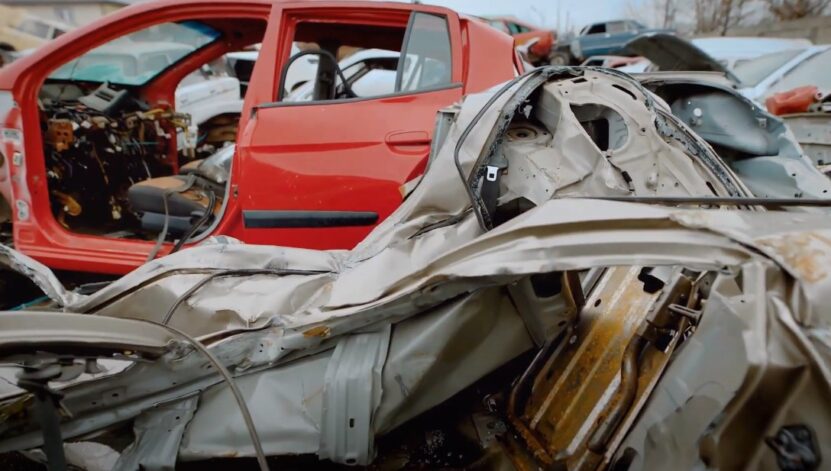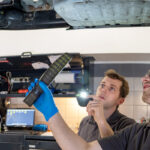When you watch your faithful motor disappear onto the back of a recovery truck for the final time, you might wonder what actually happens next. The reality is far more fascinating and environmentally sophisticated than most people imagine.
Every year, the UK processes approximately one million vehicles through its authorised scrapping system, transforming what could be millions of tonnes of dangerous waste into valuable raw materials. This isn’t just about getting rid of old cars – it’s about creating a sustainable circular economy where virtually nothing goes to waste.
The journey your car takes involves cutting-edge technology, strict environmental controls, and a detailed process designed to recover up to 95% of the materials that make up your vehicle. From precious metals in your catalytic converter to sand made from your windscreen, almost every component finds new life.
The Journey Begins: Arrival at the ATF
Your car’s transformation begins at an Authorised Treatment Facility (ATF). These aren’t ordinary scrapyards – they’re highly regulated facilities meeting stringent environmental standards set by the Environment Agency, SEPA in Scotland, and Natural Resources Wales.
The ATF system exists because of the EU’s End of Life Vehicles Directive, recognising that scrapped cars represent one of the largest sources of potentially hazardous waste. Without proper handling, millions of end-of-life vehicles could cause environmental catastrophe through leaked fluids and improper disposal.
When your vehicle arrives, trained technicians evaluate its condition and plan the most effective recycling approach. Different vehicles require different strategies depending on age, condition, and materials. The facility maintains detailed records ensuring complete traceability and regulatory compliance.
Modern ATFs operate under circular economy principles, moving away from “take, make, dispose” towards continuous material reuse and recycling. Your car isn’t being disposed of – it’s beginning a new chapter as raw materials for countless future products.
Phase 1: Vehicle Depollution
The first critical step involves careful removal of all potentially hazardous substances and fluids. This depollution process must be completed before other work begins, ensuring dangerous materials don’t contaminate the environment.
Vehicles contain extensive hazardous materials beyond obvious fluids like petrol and oil. These include brake fluid, transmission fluid, coolant, windscreen washer fluid, battery acids, and air conditioning refrigerants that can damage the ozone layer.
Each substance requires specialist handling. When multiplied across the million vehicles processed annually, improper handling could cause environmental disasters affecting soil, groundwater, and wildlife.
The depollution process employs sophisticated technology. Coolant systems undergo reverse osmosis, where fluids pass through specialist membranes filtering microscopic chemical impurities. Additional processes include evaporation, electrolysis, and crystallisation to separate and purify different components.
After drainage, systems are thoroughly flushed ensuring no residual chemicals remain. This comprehensive approach transforms potentially harmful contents into useful resources or safely managed waste rather than environmental hazards.
Phase 2: Systematic Dismantling
With hazardous materials removed, your car enters dismantling, where valuable components are extracted for reuse or specialist recycling. This requires both technical expertise and economic judgement.
The most valuable component is usually the catalytic converter, containing precious metals including platinum, palladium, and rhodium – consistently more expensive than gold. These metals act as catalysts converting harmful exhaust pollutants into less dangerous substances. Because they’re so valuable, catalytic converters require specialist handling and processing.
Tyres represent another major component. Some in good condition are resold, but most require recycling. Despite being designed for durability, modern technology effectively breaks them down into useful materials.
Automotive safety glass undergoes its own recycling process. Though complex, consisting of multiple injury-preventing layers, advancing technology processes this back into sand for construction or new glass products.
Interior components – fabric seats, carpets, trim – are removed and sorted by material type. Natural fibres become new textiles, whilst synthetic materials are broken down for manufacturing reuse.
Plastic components, including bumpers and dashboard elements, are typically thermoplastic polyolefin that can be melted and reformed. However, plastic recycling economics fluctuate with oil prices, affecting whether recycling or new production is more cost-effective.
Electronic components contain valuable non-ferrous metals including copper, silver, and gold. These go to specialist electronic waste facilities where metals are extracted and purified for new devices.
Phase 3: Destruction and Final Processing
After component removal, the remaining body shell and chassis enter “destruction” – actually the most intensive recycling phase where remaining materials are processed for maximum recovery.
Powerful hydraulic presses compress the structure into smaller, denser packages for easier transport and more efficient processing. The compressed material goes to specialist facilities with industrial shredders capable of processing entire vehicle bodies.
Following shredding, magnetic separation uses powerful electromagnets to extract ferrous metals from the mix. This remarkably effective process cleanly separates magnetic materials from non-magnetic ones.
Recovered steel undergoes chemical treatment removing impurities and contaminants, ensuring recycled automotive steel meets the same quality standards as steel from virgin materials.
Non-magnetic materials undergo further separation using density sorting and optical identification. Aluminium recovery is particularly important – recycling requires 95% less energy than producing from raw bauxite ore.
Even the smallest fragments aren’t wasted. Rubber particles become playground surfaces and road construction materials, plastic fragments become new automotive components, and glass particles are used in construction or processed into new glass.
The Circular Economy in Action
Your scrapped car represents the circular economy at its most sophisticated. Rather than linear “take, make, dispose,” your vehicle’s materials embark on continuous cycles of use, recovery, and reuse.
Steel from your car’s body might become part of a new vehicle within months, whilst aluminium could appear in aircraft components or kitchen utensils. Precious metals from your catalytic converter will likely be refined for new catalytic converters, continuing their emission-reduction role for decades.
This approach delivers enormous environmental benefits. Recovering and reusing materials rather than extracting new resources significantly reduces energy consumption, greenhouse gas emissions, and environmental disruption. Energy saved by recycling steel instead of producing from iron ore could power millions of homes.
The economic impact is equally significant. The UK’s automotive recycling industry supports thousands of jobs and generates hundreds of millions in annual economic activity. This creates sustainable economic value from what would otherwise be waste.
Innovation continues driving improvements. New technologies recover previously unrecyclable materials, whilst advances in sorting and processing increase recovered material purity and value.
Conclusion
Your car’s post-scrapping journey reveals a sophisticated, environmentally responsible industry transforming potential waste into valuable resources. From careful hazardous material removal to precious metal recovery and steel conversion into new products, virtually every component finds new purpose.
This represents far more than waste disposal – it’s crucial for sustainable manufacturing and environmental protection. By choosing legitimate ATF scrapping, you contribute to a circular economy reducing environmental impact whilst creating economic value.
The next time you see a car collected for scrapping, appreciate that it’s not heading for a simple end, but beginning a complex transformation where materials live on in countless new applications. In our increasingly sustainability-focused world, automotive recycling exemplifies how waste becomes a resource and responsible disposal contributes to a more sustainable future.




